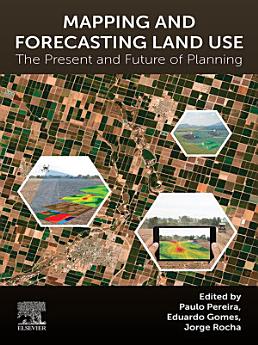Mapping and Forecasting Land Use: The Present and Future of Planning
About this ebook
About the author
Paulo Pereira is a full professor at the Environmental Management Center, Mykolas Romeris University, Lithuania. He holds a PhD in Physical Geography from the University of Barcelona and has previous experience working on spatial modelling of environmental variables and applying these results to sustainable landscape planning. Prof. Pereira was awarded the outstanding young scientist award from the Soil System Sciences Division (European Geoscience Union) and is one of the most influential scientists in the world in the field of environmental sciences, according to Elsevier/Stanford University. Prof. Pereira is an editor and guest editor of various journals in the field of environment and soil science.
Eduardo Gomes is a researcher at the Institute of Geography and Spatial Planning/Centre of Geographical Studies (University of Lisbon). He holds a PhD in Geography from Paris 1 Panthéon-Sorbonne University and the University of Lisbon. His latest research has focused on the design of modelling and collaborative simulations applied to analyse future land use/cover changes. He is an editor and reviewer of many reputed international journals.
Jorge Rocha holds a BSc in Geography and Regional Planning (1996), MSc in Geographic Information Systems (2003) and in Spatial Planning (2013), and a PhD in Geographic Information Science (2012). Jorge Rocha is currently an assistant professor at the Institute of Geography and Spatial Planning and a researcher in the Centre of Geographical Studies, both at the University of Lisbon, Portugal, where he is co-coordinator of the Laboratory for Remote Sensing, Geographical Analysis and Modelling (GEOMODLAB). He holds a PhD in Geographic Information Science, and his fields of expertise include geosimulation and geocomputation involving artificial intelligence (deep learning, agent-based models) and cellular automata and programming applied to spatial problems.






